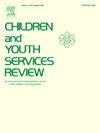Co-producing service experiences for transition-age youth in foster care: Exploring the connection between transitional independent living plan development and independent living service usage
IF 1.7
2区 社会学
Q1 FAMILY STUDIES
引用次数: 0
Abstract
In the U.S. foster care system caseworkers are charged with preparing older adolescents unlikely to be reunified with their families or be adopted for independent adulthood. An important tool is the transitional independent living plan (TILP), which involves collaboratively engaging transition-age youth in planning for their future, identifying goals, and determining service needs. The TILP guides which Independent Living Services (ILS) the youth may receive. Depending on the youth’s goals and needs, ILS may include training and support in education, career, parenting, and other areas. Past research on this topic has focused on the availability and effectiveness of ILS and TILP planning. Less is known about whether the frequency of TILP engagement is associated with ILS use. Using administrative data and representative longitudinal survey data, we examine the relationship between TILP development and ILS utilization patterns among older youth in California foster care. Our results show that youth developed less than one TILP per year, used about one ILS monthly, and used four different types of ILS while in care. Our regression results demonstrate that youth with more TILP engagement were expected to use more ILS and a broader range of ILS. Our results also highlight associations between the county’s administrative contexts and the youths’ ILS utilization patterns. Our study offers rare empirical evidence that underscores the importance of regularly co-producing future plans with youth, training caseworkers to work collaboratively with youth in decisions about their lives, and reducing between-county variation in TILP and ILS practices.
共同生产寄养过渡年龄青少年服务体验:探讨过渡时期独立生活计划发展与独立生活服务使用的关系
在美国的寄养制度中,社会工作者负责帮助那些不太可能与家人团聚或被收养成为独立成年人的年长青少年。一个重要的工具是过渡独立生活计划(TILP),它涉及到与过渡年龄青年合作,规划他们的未来,确定目标,并确定服务需求。“独立生活辅导计划”指引青少年可获得的独立生活服务。根据青少年的目标和需求,ILS可能包括教育、职业、养育子女和其他领域的培训和支持。过去关于这一主题的研究主要集中在ILS和TILP规划的可用性和有效性上。对于TILP的使用频率是否与ILS的使用相关,我们知之甚少。利用行政数据和具有代表性的纵向调查数据,我们研究了加州寄养家庭中老年青年的TILP发展与ILS利用模式之间的关系。我们的研究结果表明,青少年每年发展不到一次TILP,每月使用一次ILS,并且在护理期间使用四种不同类型的ILS。我们的回归结果显示,使用更多的语用辅助语言的年轻人使用更多的语用辅助语言,而且语用的范围更广。我们的研究结果还强调了县域行政环境与青少年ILS使用模式之间的关联。我们的研究提供了罕见的经验证据,强调了定期与青年共同制定未来计划的重要性,培训个案工作者在决定他们的生活时与青年合作,并减少县与县之间在TILP和ILS实践中的差异。
本文章由计算机程序翻译,如有差异,请以英文原文为准。
求助全文
约1分钟内获得全文
求助全文
来源期刊

Children and Youth Services Review
Multiple-
CiteScore
6.30
自引率
6.10%
发文量
303
期刊介绍:
Children and Youth Services Review is an interdisciplinary forum for critical scholarship regarding service programs for children and youth. The journal will publish full-length articles, current research and policy notes, and book reviews.
 求助内容:
求助内容: 应助结果提醒方式:
应助结果提醒方式:


